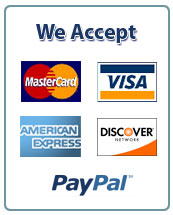Answer the following word problems
1. A new furnace for your small factory is being installed right now, will cost $29,000, and will be completed in one year. At that point, it will require ongoing maintenance expenditures of $1,200 a year. But it is far more fuel-efficient than your old furnace and will reduce your consumption of heating oil by 2,800 gallons per year. Heating oil this year costs $2 a gallon; the price per gallon is expected to increase by $0.50 a year for the next 3 years and then to stabilize for the foreseeable future. The furnace will last for 20 years from initial use, at which point it will need to be replaced and will have no salvage value. (Specifically, the firm pays for the furnace at time 0, and then reaps higher net cash flows from that investment at the end of years 1 – 20.). The discount rate is 6%.
a. What is the net present value of the investment in the furnace? (Do not round intermediate calculations. Round your answer to the nearest whole dollar.)
b. What is the IRR? (Do not round intermediate calculations. Enter your answer as a percent rounded to 2 decimal places.)
c. What is the payback period? (Do not round intermediate calculations. Round your answer to 2 decimal places.)
d. What is the equivalent annual cost of the furnace? (Do not round intermediate calculations. Round your answer to 2 decimal places.)
e. What is the equivalent annual savings derived from the furnace? (Do not round intermediate calculations. Round your answer to 2 decimal places.)
f. Compare the PV of the difference between the equivalent annual cost and savings to your answer to part (a). Are the two measures the same or is one larger?
2. Your landscaping company can lease a truck for $8,200 a year (paid at year-end) for 5 years. It can instead buy the truck for $35,000. The truck will be valueless after 5 years. The interest rate your company can earn on its funds is 6%.
a. What is the present value of the cost of leasing? (Do not round intermediate calculations. Round your answer to 2 decimal places.)
b. Is it cheaper to buy or lease?
c. What is the present value of the cost of leasing if the lease payments are an annuity due, so the first payment comes immediately? (Do not round intermediate calculations. Round your answer to 2 decimal places.)
d. Is it now cheaper to buy or lease?
3. A factory costs $290,000. You forecast that it will produce cash inflows of $85,000 in year 1, $145,000 in year 2, and $230,000 in year 3. The discount rate is 10%.
a. What is the value of the factory? (Do not round intermediate calculations. Round your answer to 2 decimal places.)
b. Is the factory a good investment?
4. Compute the future value of a $200 cash flow for the following combinations of rates and times. (Do not round intermediate calculations. Round your answers to 2 decimal places.)
a. r = 8%; t = 10 years
b. r = 8%; t = 20 years
c. r = 4%; t = 10 years
d. r = 4%; t = 20 years
5. The following are the cash flows of two independent projects:
Year | Project A | Project B | ||||
0 | $ | (360 | ) | $ | (360 | ) |
1 |
| 190 |
|
| 260 |
|
2 |
| 190 |
|
| 260 |
|
3 |
| 190 |
|
| 260 |
|
4 |
| 190 |
|
|
|
|
a. If the opportunity cost of capital is 12%, calculate the NPV for both projects. (Do not round intermediate calculations. Round your answers to 2 decimal places.)
b. Which of these projects is worth pursuing?
multiple choice
· Project A
· Project B
· Both
· Neither
6. Bottoms Up Diaper Service is considering the purchase of a new industrial washer. It can purchase the washer for $4,500 and sell its old washer for $900. The new washer will last for 6 years and save $1,100 a year in expenses. The opportunity cost of capital is 12%, and the firm’s tax rate is 21%.
a. If the firm uses straight-line depreciation over a 6-year life, what are the cash flows of the project in years 0 to 6? The new washer will have zero salvage value after 6 years, and the old washer is fully depreciated. (Negative amounts should be indicated by a minus sign.)
b. What is project NPV? (Do not round intermediate calculations. Round your answer to 2 decimal places.)
c. What is NPV if the firm investment is entitled to immediate 100% bonus depreciation? (Do not round intermediate calculations. Round your answer to 2 decimal places.)
7. If you insulate your office for $19,000, you will save $1,900 a year in heating expenses. These savings will last forever.
a. What is the NPV of the investment when the cost of capital is 5%? 10%?
b. What is the IRR of the investment? (Enter your answer as a whole percent.)
c. What is the payback period on this investment?
8. Find the interest rate implied by the following combinations of present and future values: (Do not round intermediate calculations. Enter your answers as a percent rounded to 2 decimal places. Leave no cells blank – be certain to enter "0" wherever required.)
|
9. Revenues generated by a new fad product are forecast as follows:
Year | Revenues |
1 | $65,000 |
2 | 50,000 |
3 | 40,000 |
4 | 30,000 |
Thereafter | 0 |
Expenses are expected to be 40% of revenues, and working capital required in each year is expected to be 20% of revenues in the following year. The product requires an immediate investment of $60,000 in plant and equipment.
Required:
a. What is the initial investment in the product? Remember working capital.
b. If the plant and equipment are depreciated over 4 years to a salvage value of zero using straight-line depreciation, and the firm’s tax rate is 40%, what are the project cash flows in each year? Assume the plant and equipment are worthless at the end of 4 years. (Do not round intermediate calculations.)
c. If the opportunity cost of capital is 15%, what is the project's NPV? (A negative value should be indicated by a minus sign. Do not round intermediate calculations. Round your answer to 2 decimal places.)
d. What is project IRR? (Do not round intermediate calculations. Enter your answer as a percent rounded to 2 decimal places.)
10.
a. What is the present value of a 3-year annuity of $210 if the discount rate is 7%? (Do not round intermediate calculations. Round your answer to 2 decimal places.)
b. What is the present value of the annuity in (a) if you have to wait an additional year for the first payment? (Do not round intermediate calculations. Round your final answer to 2 decimal places.)
11. You can buy property today for $3.8 million and sell it in 4 years for $4.8 million. (You earn no rental income on the property.)
a. If the interest rate is 7%, what is the present value of the sales price? (Do not round intermediate calculations. Enter your answer in millions rounded to 3 decimal places.)
b. Is the property investment attractive to you?
c-1. What is the present value of the future cash flows, if you also could earn $280,000 per year rent on the property? The rent is paid at the end of each year. (Do not round intermediate calculations. Enter your answer in millions rounded to 3 decimal places.)
c-2. Is the property investment attractive to you now?
|
12. Talia’s Tutus bought a new sewing machine for $70,000 that will be depreciated over 5 years using double-declining-balance depreciation with a switch to straight-line.
Required:
a. Find the depreciation charge each year.
|
·
b. If the sewing machine is sold after 2 years for $44,000, what will be the after-tax proceeds on the sale if the firm’s tax bracket is 35%?
|
13. Old Time Savings Bank pays 5% interest on its savings accounts. If you deposit $2,900 in the bank and leave it there: (Do not round intermediate calculations. Round your answers to 2 decimal places.)
a. How much interest will you earn in the first year?
b. How much interest will you earn in the second year?
c. How much interest will you earn in the 10th year?
14. The owner of a bicycle repair shop forecasts revenues of $172,000 a year. Variable costs will be $53,000, and rental costs for the shop are $33,000 a year. Depreciation on the repair tools will be $13,000.
a. Prepare an income statement for the shop based on these estimates. The tax rate is 20%.
|
b. Calculate the operating cash flow for the repair shop using the three methods given below:
Now calculate the operating cash flow.
i. Dollars in minus dollars out.
ii. Adjusted accounting profits.
iii. Add back depreciation tax shield.
|
15. The following are the cash flows of two projects:
Year | Project A | Project B | ||||
0 | $ | (360 | ) | $ | (360 | ) |
1 |
| 190 |
|
| 260 |
|
2 |
| 190 |
|
| 260 |
|
3 |
| 190 |
|
| 260 |
|
4 |
| 190 |
|
|
|
|
a. Calculate the NPV for both projects if the discount rate is 12%. (Do not round intermediate calculations. Round your answers to 2 decimal places.)
|
b. Suppose that you can choose only one of these projects. Which would you choose?
multiple choice
· Project B
· Project A
· Neither


 April 19th, 2022
April 19th, 2022 

 Posted in
Posted in 